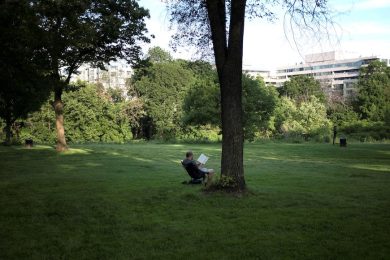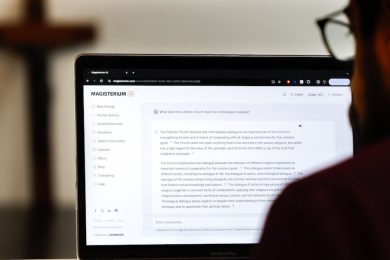“The Life-Changing Magic of Tidying Up: The Japanese Art of Decluttering and Organizing” by Marie Kondo; Ten Speed Press; October 2014; 213 pp; $16.99
By Ann Jonas
For The Visitor
Spring is approaching, and many of us are starting to think about spring cleaning. Advice and inspiration to tackle decluttering and organizing are available in the form of a best-selling book “The Life-Changing Magic of Tidying Up,” which has sold more than 3 million copies and has been published in more than 30 countries.
Author Marie Kondo, a Japanese cleaning consultant created a revolutionary system — the KonMari Method, taken from her name — that has taken Japan by storm. She visits homes and offices in that country, giving hands-on advice to people who find it difficult to clean and declutter. Kondo claims that her system will not only work to declutter, it will lead to lasting results. There is a three-month waiting list to hire her as a consultant.
 The KonMari Method, detailed in the book, is, without question, a drastic system that insists on tidying in one shot, not little by little. Basically, the method involves only two essential actions: discarding and then deciding where to store the remaining items.
The KonMari Method, detailed in the book, is, without question, a drastic system that insists on tidying in one shot, not little by little. Basically, the method involves only two essential actions: discarding and then deciding where to store the remaining items.
Kondo states “Anyone who experiences this process, no matter who they are, will vow never to revert to clutter again.”
Because people often store like items in more than one spot, the method calls for sorting by category, not location, and in a specific order. Kondo recommends this order: clothes, books, papers, “komono” (miscellany) and mementos (souvenirs, keepsakes, etc.).
Choosing what we want to keep, not what we want to get rid of is the focus of the KonMari Method. Kondo recommends collecting every item in the category (or subcategory, especially for clothes), handling each item and asking, “Does this spark joy?” If it doesn’t, get rid of it; if it does, keep it. This question is the basis for the entire method and book.
When sorting through books, Kondo suggests dividing them into four general categories: books read for pleasure, practical books (cookbooks, reference, etc.), visual (photograph collections, etc.) and magazines. Again, pick up each item and decide whether or not it sparks joy when it is touched. (Kondo stresses touching, not reading, when going through books.)
Keeping a book because it might be read again is strongly discouraged, as is holding on to books you plan to read or use someday.
Kondo contends that most of the papers we store can be discarded. Lecture materials, credit card statements, pay slips and used checkbooks should all be disposed of. Warranties, legal documents and greeting cards (“if they spark joy in your heart”) should be retained.
“Komono” should be sorted in order; Kondo lists 10 different categories and the order to use. CDs and DVDs should be first, kitchen goods/food supplies ninth and “other” last. Some common types of “komono” she mentions are gifts, cosmetic samples, unidentified cords and spare buttons.
Kondo leaves sentimental items for last because they are the most difficult to discard. Certainly, she looks at them a little more unfeelingly than many readers would, stating, “No matter how wonderful things used to be, we cannot live in the past.” She does, however, reiterate “if it sparks joy, keep it.”
After the choosing and discarding is done, Kondo gives readers clear directions for storing the items retained. Instructions are given for folding and arranging clothing. Kondo advocates storing most articles vertically, rather than piling them, and insists that a place must be designated for each item.
Kondo’s method is unquestionably extreme, sometimes impractical and a little absurd (she suggests greeting your house when you enter it). In addition, although she mentions donating and recycling, she doesn’t stress using these methods to declutter as much as she could have. This book, though, will spark the inspiration and motivation to look at our possessions and our future purchases, using the simple benchmark: “Does this spark joy?”
“The Life-Changing Magic of Tidying Up” along with Kondo’s follow-up book “Spark Joy: An Illustrated Master Class on the Art of Organizing and Tidying Up” are available in bookstores everywhere, including the College of St. Benedict and St. John’s University Bookstores.
Ann Jonas is the general book buyer for the College of St. Benedict and St. John’s University.






















